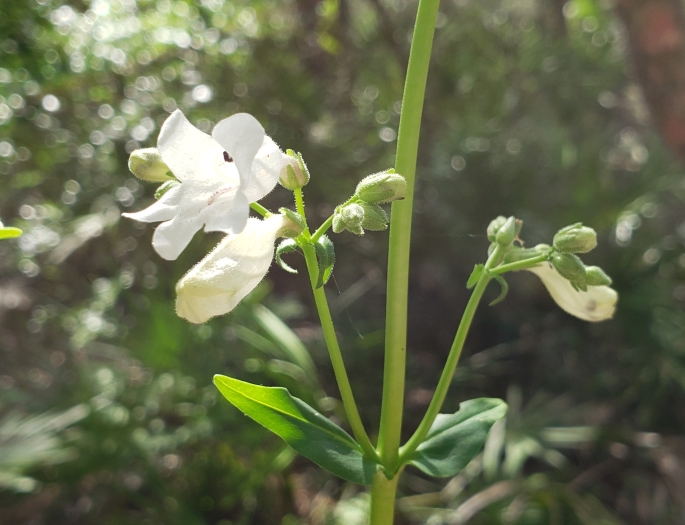Manyflower Beardtongue
(Penstemon multiflorus)
Manyflower Beardtongue (Penstemon multiflorus)
/
/

© Arturo Santos
CC BY 4.0
Image By:
© Arturo Santos
Recorded By:
Copyright:
CC BY 4.0
Copyright Notice:
Photo by: © Arturo Santos | License Type: CC BY 4.0 | License URL: http://creativecommons.org/licenses/by/4.0/ | Uploader: aispinsects | Publisher: iNaturalist |



















































Estimated Native Range
Summary
Penstemon multiflorus, commonly known as Manyflower Beardtongue, is a semi-deciduous perennial herb native to open woodlands and pine flatwoods in the Southeastern United States. It typically grows between 1.5 and 2.5 feet in height and is known for its showy, tubular white flowers that may have a slight rose-colored overcast. These flowers bloom in late spring to early summer and attract pollinators such as bees and hummingbirds. The plant forms clumps of narrow, lance-shaped leaves that add texture to garden settings.
Manyflower Beardtongue is valued for its drought tolerance and low maintenance requirements, making it an excellent choice for xeriscaping and naturalized areas. It is also used in borders, rock gardens, and as a specimen plant for its ornamental flowers. This species thrives in full sun to part shade and prefers well-drained soils, particularly sandy soils. While it is generally disease-resistant, it can be susceptible to root rot if overwatered or planted in poorly drained soils. It is not known for aggressive roots or significant pest problems. Manyflower Beardtongue is not typically invasive when grown outside its native range but should be monitored to ensure it does not spread uncontrollably.CC BY-SA 4.0
Manyflower Beardtongue is valued for its drought tolerance and low maintenance requirements, making it an excellent choice for xeriscaping and naturalized areas. It is also used in borders, rock gardens, and as a specimen plant for its ornamental flowers. This species thrives in full sun to part shade and prefers well-drained soils, particularly sandy soils. While it is generally disease-resistant, it can be susceptible to root rot if overwatered or planted in poorly drained soils. It is not known for aggressive roots or significant pest problems. Manyflower Beardtongue is not typically invasive when grown outside its native range but should be monitored to ensure it does not spread uncontrollably.CC BY-SA 4.0
Plant Description
- Plant Type: Herb
- Height: 1.5-3 feet
- Width: 2-3 feet
- Growth Rate: Moderate
- Flower Color: White
- Flowering Season: Spring, Summer
- Leaf Retention: Deciduous
Growth Requirements
- Sun: Full Sun
- Water: Low
- Drainage: Fast
Common Uses
Bee Garden, Bird Garden, Butterfly Garden, Deer Resistant, Drought Tolerant, Hummingbird Garden, Low Maintenance, Rabbit Resistant
Natural Habitat
Open woodlands and pine flatwoods
Other Names
Common Names: Many-Flower Penstemon
Scientific Names: , Penstemon multiflorus,
GBIF Accepted Name: Penstemon multiflorus Chapm. ex Benth.